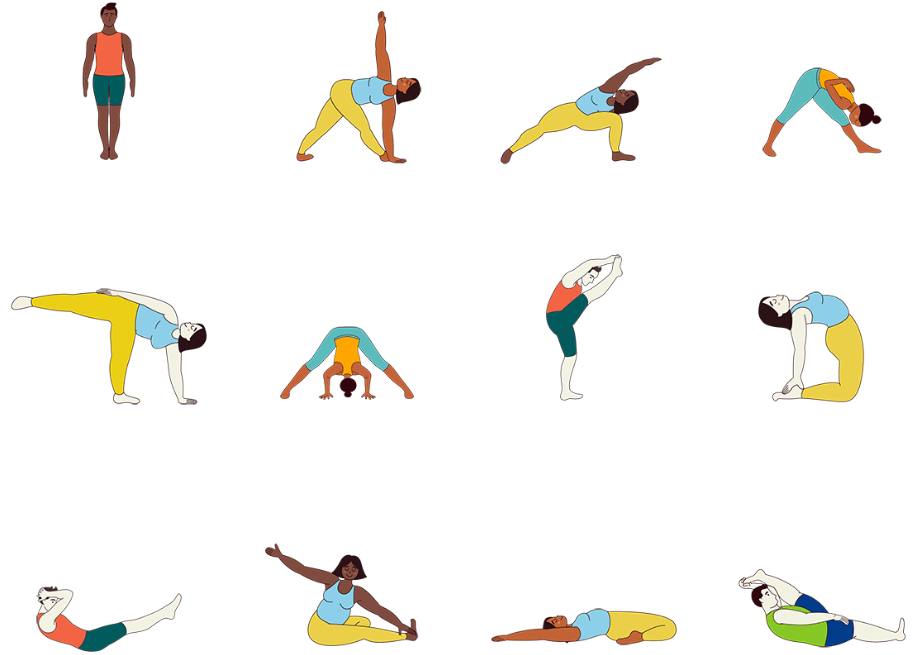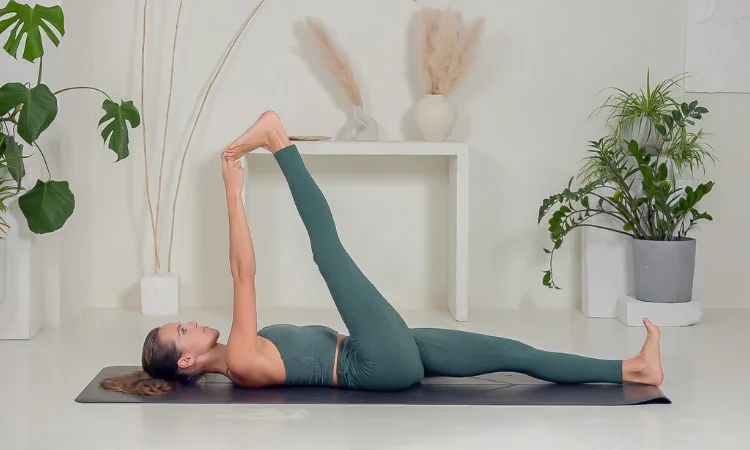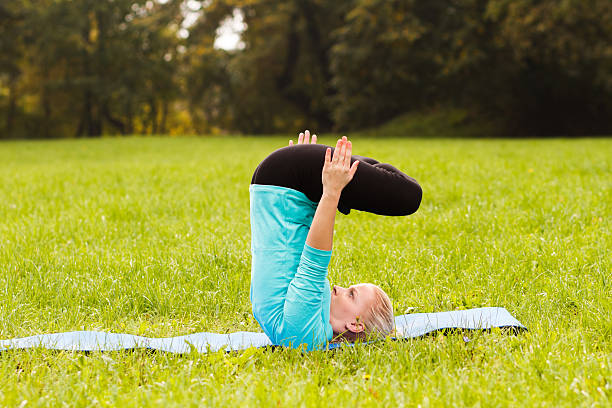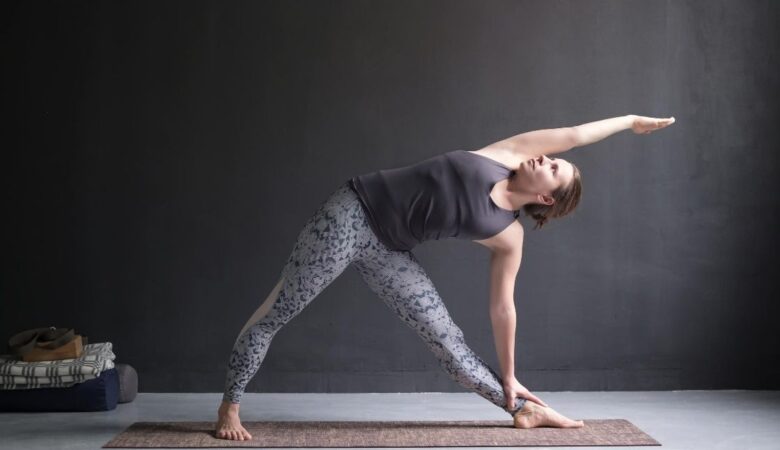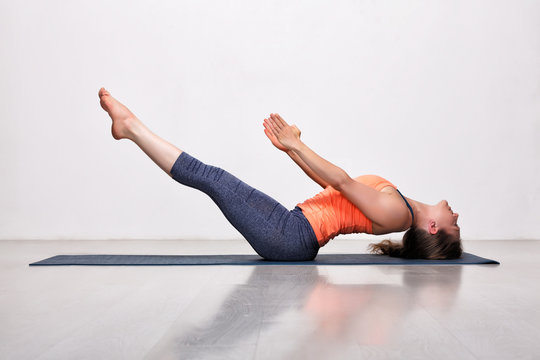In a fast-paced, overstimulated world, the body craves stillness, and the mind longs for quiet. Iyengar Yoga, with its profound use of alignment and props, offers a deeply effective method of relaxation through gentle, restorative sequences. Designed to reduce stress, calm the nervous system, and invite inner peace, these poses emphasize comfort, support, and stillness. So, see below a gentle Iyengar Yoga Sequence for relaxation.
This sequence is ideal for:
- Evening practice before sleep
- Days when you feel depleted or anxious
- Recovery from illness or emotional fatigue
- Gentle practice for beginners or seniors
Table of Contents
Philosophy of Gentle Iyengar Yoga Sequence for Relaxation:
In Iyengar Yoga, relaxation is not just passive, it’s conscious, supported rest. Using props like bolsters, blankets, straps, and blocks, the body is placed in stable, comfortable positions so the mind can withdraw inward (pratyahara), preparing the ground for mental clarity and emotional balance.
Preparation:
Props Needed:
- 1–2 bolsters
- 2–4 blankets
- 1 yoga strap
- 1–2 blocks
- Wall space (for legs-up-the-wall pose)
- Eye pillow (optional)
Environment:
- Quiet, dim lighting
- Warm room temperature
- Soothing music or silence
Gentle Iyengar Sequence for Relaxation (45–60 minutes):
1. Supta Baddha Konasana or Reclining Bound Angle Pose:
Duration: 5–8 minutes
Props: Bolster lengthwise under spine, strap around feet and hips, blocks under thighs
Instructions:
- Sit with a bolster behind you.
- Bring soles of feet together, knees apart.
- Use a strap to keep the legs bound in place.
- Lie back with head and spine supported, arms open.
2. Viparita Karani or Legs-Up-the-Wall Pose:
Duration: 8–10 minutes
Props: Blanket or bolster under hips, wall support
Instructions:
- Sit sideways next to the wall, then swing your legs up.
- Place a folded blanket or bolster under the hips for elevation.
- Arms relaxed at sides, palms up. Use an eye pillow.
3. Supported Forward Fold or Adho Mukha Sukhasana with Props:
Duration: 5–7 minutes
Props: Bolster or stacked blankets on crossed legs
Instructions:
- Sit in a cross-legged position.
- Place a bolster horizontally on your thighs.
- Fold forward to rest the torso and head on the bolster.
- Switch leg crossing halfway through.
4. Setu Bandha Sarvangasana or Supported Bridge Pose:
Duration: 5–7 minutes
Props: Bolster or block under sacrum, blanket under neck
Instructions:
- Lie on your back with knees bent, feet hip-width.
- Slide a bolster or block under your sacrum.
- Extend legs straight if comfortable or keep knees bent.
- Relax arms to the sides.
5. Supta Padangusthasana Variation or Reclining Hamstring Stretch with Strap:
Duration: 2–3 minutes each side
Props: Strap, optional blanket under head
Instructions:
- Lie flat, loop a strap around one foot, and extend the leg upward.
- Keep the opposite leg extended on the floor or bent.
- Keep your shoulders grounded and face relaxed.
6. Supported Reclining Twist or Jathara Parivartanasana Variation:
Duration: 2–3 minutes each side
Props: Bolster or blankets under bent knees
Instructions:
- Lie on your back, knees bent, arms wide.
- Drop knees to one side onto a bolster.
- Turn your head in the opposite direction.
7. Savasana Or Corpse Pose:
Duration: 10–15 minutes
Props: Blanket under head and knees, eye pillow, bolster under thighs (optional)
Instructions:
- Lie down with arms and legs extended.
- Adjust props to eliminate all physical effort.
- Allow eyes to close and breath to deepen naturally.
Breath Awareness (Optional for End):
Practice: After Savasana, sit quietly for 2–3 minutes observing your breath. No control just notice.
Closing the Practice:
Gently transition out of your final pose. Roll to one side, take a moment in fetal position, and rise slowly. Sit in stillness for a few moments to absorb the effects.
Tips for Success:
- Use more props than you think you need. Comfort is key.
- Stay warm, and use a blanket over your body if needed.
- Practice consistently, even if only a few poses each day.
- Avoid distractions, silence your phone, and inform others of your practice time.
- Allow emotions to surface, restorative yoga often unlocks stored emotional tension.
Conclusion:
This gentle Iyengar sequence offers a sanctuary of stillness amid daily stress. The thoughtful use of props invites the body to unravel tension, the breath to flow with ease, and the mind to find refuge in silence. Whether practiced once a week or daily, this routine can restore your inner balance and cultivate long-lasting tranquility.

